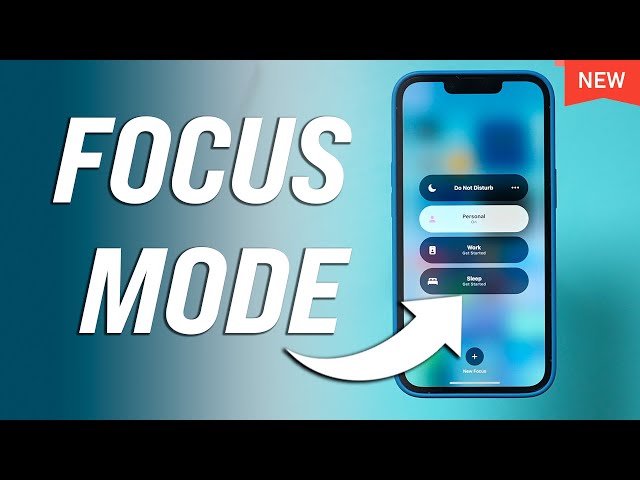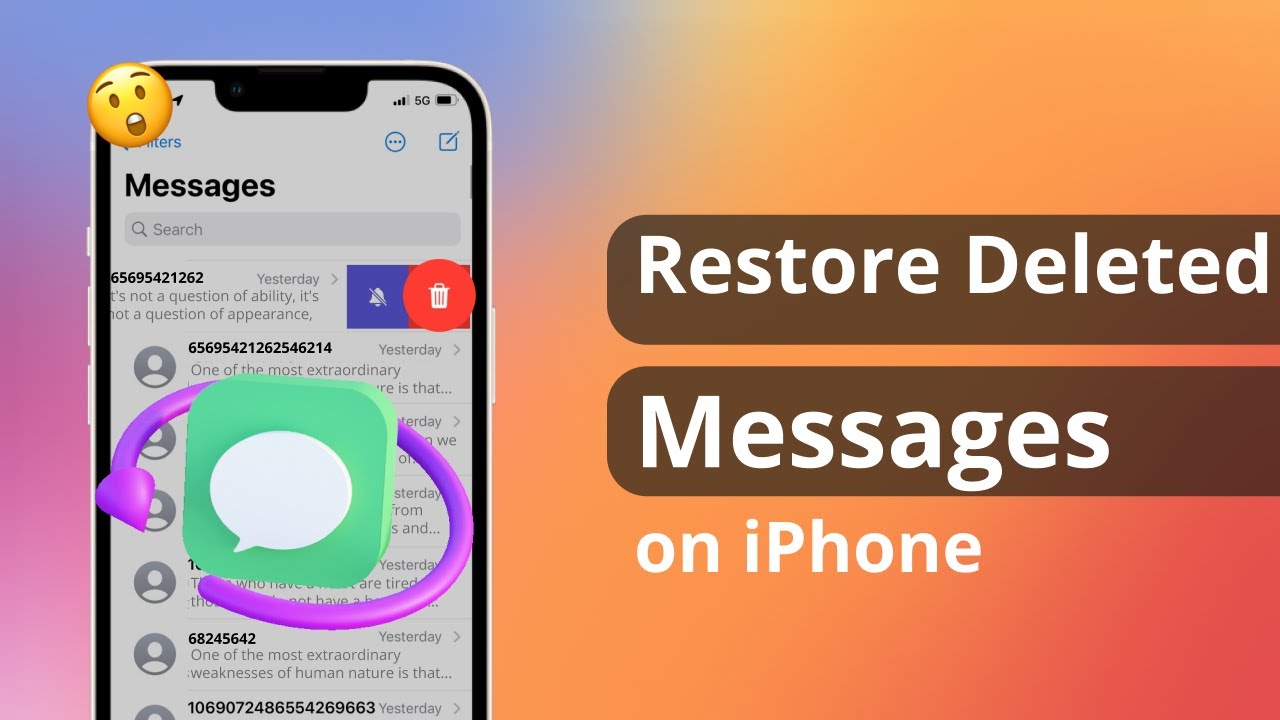Our iPhones are amazing tools, but they can also be huge sources of distraction. A constant stream of notifications, messages, and alerts pulls our attention away from tasks, making it hard to concentrate and get things done. It feels like trying to focus in a room where someone keeps tapping you on the shoulder! I used to just put my phone face down or use the basic Do Not Disturb, but I still worried about missing something important.
Apple’s Focus Mode, introduced in iOS 15 and improved since, is a powerful tool built right into your iPhone (and iPad, Mac, Apple Watch) specifically designed to help you manage these distractions. It’s like a customizable Do Not Disturb for different parts of your life – work, personal time, sleep, and more. Using it effectively can make a real difference in your productivity.
This guide will show you how to set up and use Focus Mode to minimize interruptions and help you concentrate better.
What is Focus Mode and Why Use It for Productivity?
Focus Mode lets you create custom profiles to control which notifications you receive and which calls come through at specific times or locations, or when you’re using certain apps.
Using it for productivity helps by:
- Filtering Out Noise: Only allows notifications from people and apps you deem important for your current task.
- Setting Boundaries: Signals to others that you’re focusing (if you choose to share your status).
- Creating Dedicated Spaces: Can even show tailored Home Screen pages with only the apps relevant to your current focus.
- Automating Concentration: Turns on automatically based on your schedule or activity, so you don’t have to remember.
Ready to take control of your notifications and boost your focus?
Step 1: Access and Set Up Your First Focus
You can start with a suggested Focus or create a new one from scratch.
- Open Settings: Tap the Settings app icon.
- Go to Focus: Scroll down and tap Focus.
- Choose or Create a Focus: You’ll see default options like Do Not Disturb, Personal, Sleep, and Work.
- To customize a default, tap on it.
- To create a new one (e.g., “Writing Time,” “Reading Focus”), tap the + icon in the top right corner and select Custom.
- Name and Customize (for Custom Focus): Give your Focus a name (e.g., “Deep Work”), choose an icon and color, then tap Next.
You’ve started setting up your Focus. Now let’s customize what it does.
Step 2: Customize Allowed Notifications (Filter the Noise)
This is the core of Focus Mode – deciding who and what can reach you.
- Allowed People: Under “Allowed Notifications,” tap People.
- Tap Add Person to select contacts whose calls and messages you always want to come through when this Focus is active (e.g., your partner, kids, boss).
- Under “Allow Calls From,” you can select specific groups or choose to allow Allowed People Only, Everyone, or No One. You can also toggle on Allow Repeated Calls (a second call from the same person within three minutes will not be silenced).
- Allowed Apps: Still under “Allowed Notifications,” tap Apps.
- Tap Add App to select specific applications whose notifications you want to receive when this Focus is active (e.g., your email app, calendar, Slack if it’s essential for work).
- All other apps’ notifications will be silenced or delivered quietly to your Notification Center when this Focus is on.
How to do it: Think about the purpose of this Focus. For a “Work” focus, you might allow colleagues and work-related apps. For a “Reading” focus, perhaps only family and your e-reader app.
Step 3: Link Your Focus to Your Lock Screen and Home Screen (Create a Visual Space)
Focus Mode can change the appearance of your phone to match your state of mind, reducing visual clutter and temptation.
- Customize Screens: After setting up allowed notifications, you’ll see options under “Customize Screens.”
- Lock Screen: Tap Customize Screen under the Lock Screen image. You can choose a specific photo, wallpaper, or even a custom Lock Screen you’ve created that includes widgets related to your focus (like upcoming calendar events for a Work focus).
- Home Screen: Tap Customize Screen under the Home Screen image. You can choose to show a specific number of notification badges on app icons, or crucially, select a specific Home Screen page that will be visible when this Focus is on. This is powerful – you can create a Home Screen page with only your productivity apps and link your Work Focus to it, hiding distracting apps like social media while you’re trying to concentrate.
- Choose Pages: If linking Home Screen, you’ll see your different Home Screen pages. Uncheck the pages you want hidden when this Focus is active, leaving only the relevant ones visible.
How to do it: Create Home Screen pages designed for specific tasks before setting up your Focuses. Then link the appropriate page(s) to your Work, Study, or Reading Focus.
Step 4: Set Schedules and Automations (Make it Automatic)
Manually turning Focus on and off works, but automating it ensures consistency.
- Add Schedule or Automation: Back in the main settings for your Focus (e.g., “Deep Work”), scroll down to “Set a Schedule” or “Automatic Activation.” Tap Add Schedule or Automation.
- Choose Automation Type: You have several options:
- Time: Set the Focus to turn on and off at specific times each day (e.g., Weekdays, 9:00 AM to 5:00 PM for a Work focus).
- Location: Set the Focus to turn on when you arrive at or leave a specific location (e.g., turn on “Gym” focus when you arrive at your gym).
- App: Set the Focus to turn on when you open a specific application (e.g., turn on “Reading Focus” when you open your Kindle app).
- Configure Automation: Set the specific parameters (times, days, location address, app name).
How to do it: Think about when and where you need to focus regularly. Set up automation for your typical work hours, study sessions, or when you open apps you use for deep work or reading. This ensures the Focus turns on automatically so you don’t forget.
Step 5: Link Focuses Across Devices (Seamless Experience)
Once you set up a Focus on one Apple device logged into your Apple ID, it can sync automatically to your other devices (iPad, Mac, Apple Watch).
- In the main Focus settings screen (where you see the list of all your Focuses), ensure the toggle for Share Across Devices is turned On.
How to do it: Set up a Focus once on your iPhone, and it will appear and activate on your other devices, keeping your concentration seamless across your Apple ecosystem.
Step 6: Activate and Deactivate Your Focus
Even with automation, you can manually control your Focus Modes.
- Using Control Center (Quickest):
- Swipe down from the top-right corner of your screen to open Control Center.
- Tap the Focus button (it will show the icon of the currently active Focus, or the crescent moon for Do Not Disturb if no custom Focus is active).
- Tap the name of the Focus you want to activate (e.g., “Deep Work”).
- To turn it off, tap the Focus button again and tap the name of the active Focus (it will turn off).
- Using Settings: Go back to Settings > Focus, tap the name of the Focus, and toggle the switch at the top to turn it On or Off.
- Via Automation: As set up in Step 4, it will turn on/off automatically based on your rules.
How to do it: Use Control Center for quick manual control throughout the day.
Step 7: Share Your Focus Status (Let Others Know)
You can allow apps like Messages to automatically display that you have notifications silenced, letting people know you might not respond immediately without you having to tell them.
- In the main Focus settings screen, tap Focus Status.
- Toggle Share Focus Status on.
- Below this, you can choose which specific Focus Modes will share their status.
How to do it: Turn this on for your Work, Deep Work, or Sleep Focuses. When someone sends you a message in an app that supports this feature (like iMessage), they might see a small note under your name saying you have notifications silenced with Focus.
Putting It Into Practice for Productivity
Combine these steps to maximize Focus Mode for productivity:
- Create specific Focuses for different work tasks (e.g., “Writing,” “Meetings,” “Coding”).
- Allow only essential apps and people for each focus. For “Deep Work,” this might be very few; for “Meetings,” it might be your communication apps.
- Link Home Screen pages with only the apps needed for that task.
- Automate your main work Focus during your typical working hours.
- Manually activate specific task Focuses when you start a focused work block.
- Use the Focus Status to set boundaries.
Using Focus Mode takes a little time to set up initially, but the payoff in reduced distractions and improved concentration is well worth the effort. It gives you back control over your phone, making it a tool for productivity rather than a source of constant interruption. Start with one Focus, refine it, and add more as you see the benefits.





